Jul 17, 2024
•
Zach Hudson
Imagine a home where form meets function in perfect harmony, where clean lines and simple elegance define every room. Welcome to the world of Bauhaus interior design, a timeless style that merges artistry with practicality! This revolutionary approach to design emerged in the early 20th century, transforming the way we think about living spaces. Bauhaus interiors are characterized by their emphasis on functionality, geometric shapes, and the use of industrial materials. By embracing this design philosophy, you can create a home that is both aesthetically pleasing and highly efficient.
The Bauhaus movement, founded in 1919 by Walter Gropius in Germany, revolutionized interior design with its emphasis on functionality, simplicity, and geometric forms. Bauhaus design principles prioritize form following function, integrating artistry with practical living solutions. This movement has left a lasting impact on contemporary interior design, making it relevant for modern living spaces. The Bauhaus school brought together artists, architects, and craftsmen, fostering a collaborative environment that produced groundbreaking ideas. Its influence can be seen in everything from furniture design to architectural concepts, shaping the way we approach interior spaces today.
In this article, we will explore the history, key elements, substyles, and room-by-room examples of Bauhaus interior design, providing insights on how to incorporate this timeless style into your home. We'll delve into the core principles that define Bauhaus design, such as the use of primary colors, industrial materials, and minimalist aesthetics. You'll discover how to apply these concepts to create functional and visually striking spaces in every room of your house. Whether you're a design enthusiast or simply looking to refresh your living space, this guide will help you understand and implement the enduring principles of Bauhaus interior design.
What is Bauhaus Interior Design?
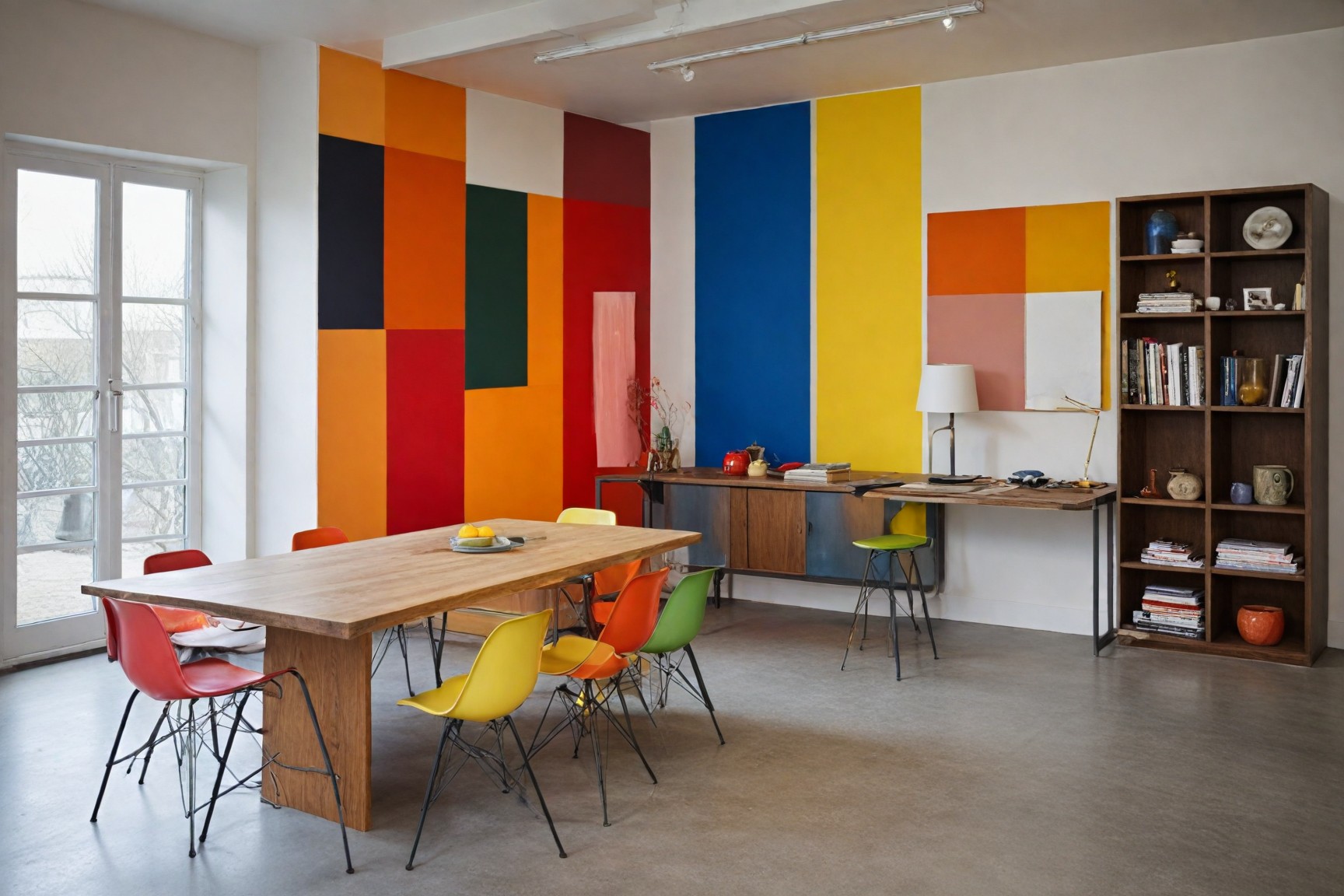
Bauhaus interior design is characterized by its focus on functionality, simplicity, and the integration of art and technology. This design style emphasizes the use of geometric shapes, primary colors, and industrial materials to create spaces that are both practical and visually appealing. Bauhaus design seeks to embody modernist ideals by merging form and function seamlessly.
History and Origins of Bauhaus Design
The Bauhaus movement began with the founding of the Bauhaus school by Walter Gropius in Weimar, Germany, in 1919. The school aimed to bridge the gap between art and industry, promoting a new approach to design that prioritized functionality, simplicity, and mass production. Influential artists and designers, including Wassily Kandinsky, Paul Klee, and Marcel Breuer, contributed to the distinctive style and philosophy of the Bauhaus movement.
Influence of Bauhaus on Contemporary Interior Design
Bauhaus design has had a lasting impact on contemporary interior design, inspiring modernist and minimalist styles. Its core principles of functionality, simplicity, and the use of industrial materials continue to influence designers and architects today. Contemporary design trends often draw inspiration from Bauhaus through geometric patterns, primary colors, and minimalist furniture, demonstrating the enduring relevance of this pioneering design movement.
Key Elements of Bauhaus Interior Design
Bauhaus interior design is defined by its focus on functionality, simplicity, geometric shapes, primary colors, industrial materials, and a minimalist aesthetic. These elements work together to create spaces that are both practical and visually appealing. The Bauhaus approach to design prioritizes the integration of form and function, resulting in interiors that are efficient, uncluttered, and aesthetically pleasing. Each element of Bauhaus design serves a purpose, contributing to the overall harmony and balance of the space.
Functionality and Simplicity
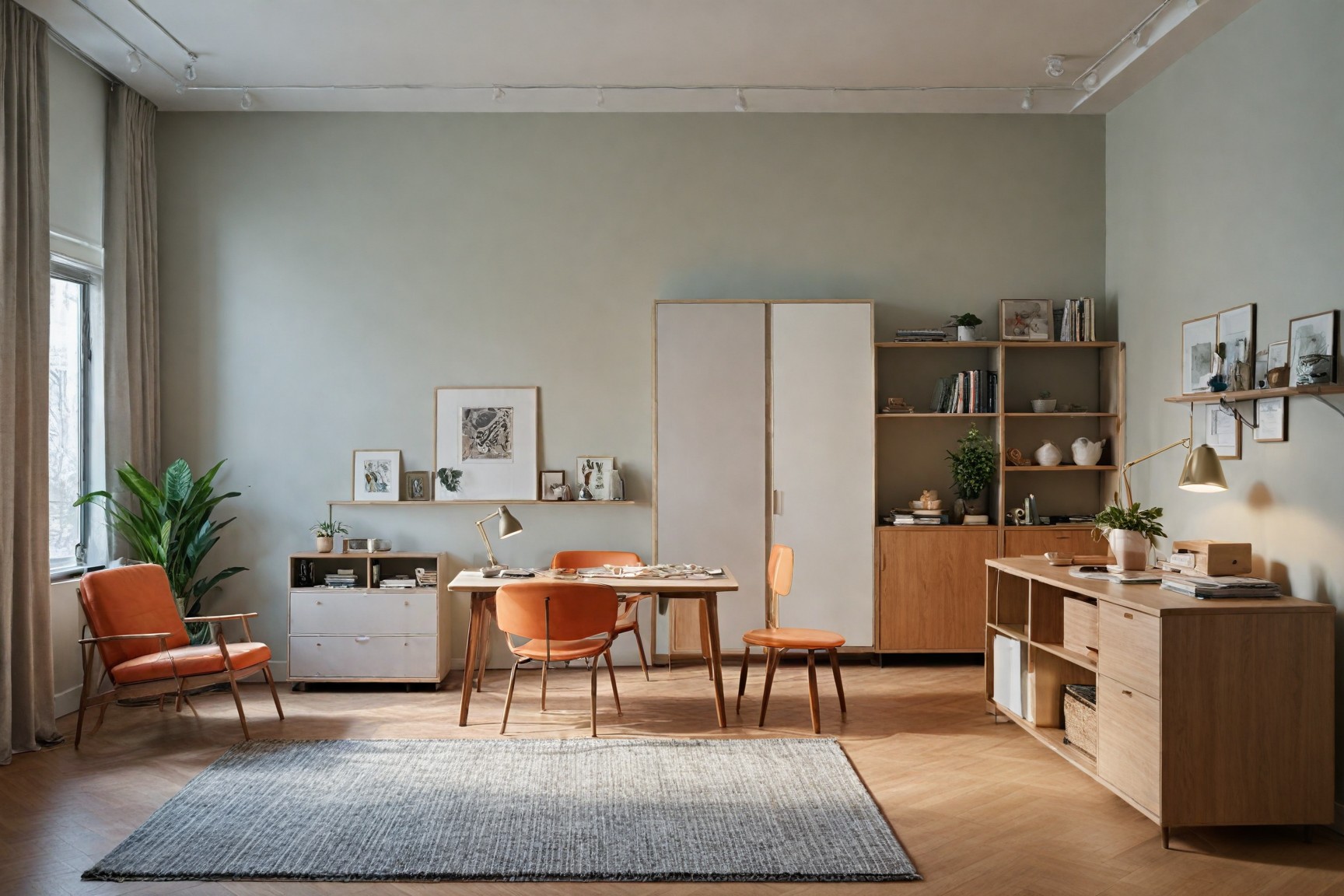
Bauhaus design emphasizes practicality and efficiency. Furniture and decor are selected for their usefulness, with a focus on clean lines and uncluttered spaces. Incorporating modular furniture, built-in storage, and multi-purpose pieces can achieve this balance. The Bauhaus philosophy rejects superfluous ornamentation, instead favoring designs that serve a clear purpose. This approach results in interiors that are streamlined, organized, and highly functional, with every element carefully considered for its practical value.
Geometric Shapes and Forms
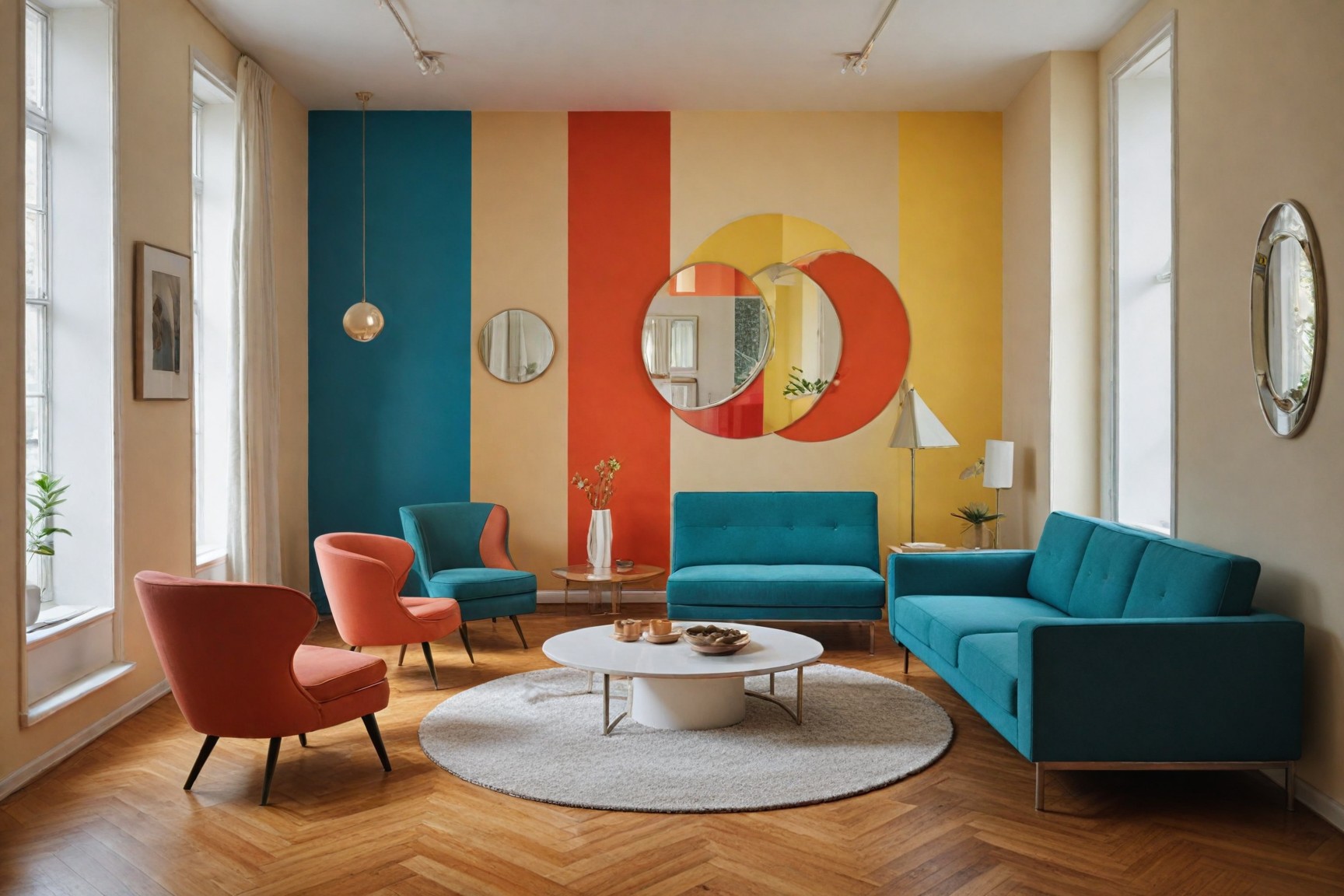
Geometric shapes like circles, squares, and triangles are central to Bauhaus design, creating visual harmony and balance. Clean lines and right angles are typical, with geometric patterns appearing in items like mirrors, coffee tables, and wallpapers. The use of geometric forms extends beyond furniture and decor to architectural elements, such as windows, doorways, and built-in features. These shapes are often repeated throughout a space, creating a sense of rhythm and cohesion in the design.
Primary Colors and Monochromatic Schemes
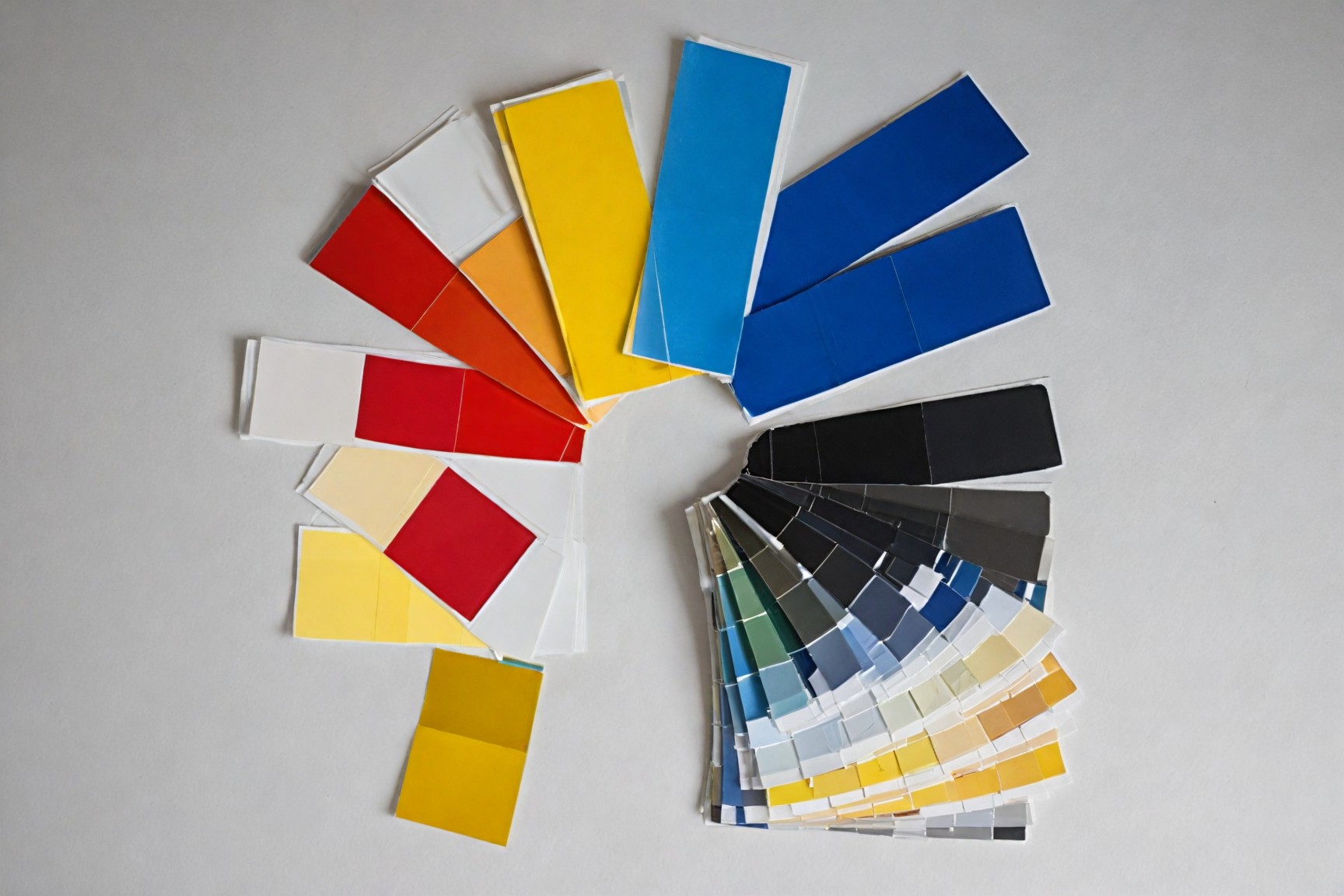
Bold primary colors (red, blue, yellow) and monochromatic schemes (black, white) define Bauhaus aesthetics. These palettes create striking contrasts and visual clarity, seen in accent chairs, rugs, and throw pillows. The use of primary colors is often balanced with neutral tones, creating a bold yet harmonious color scheme. Monochromatic schemes, particularly black and white, are frequently employed to emphasize the clean lines and geometric forms characteristic of Bauhaus design.
Industrial Materials (Steel, Glass, Concrete)
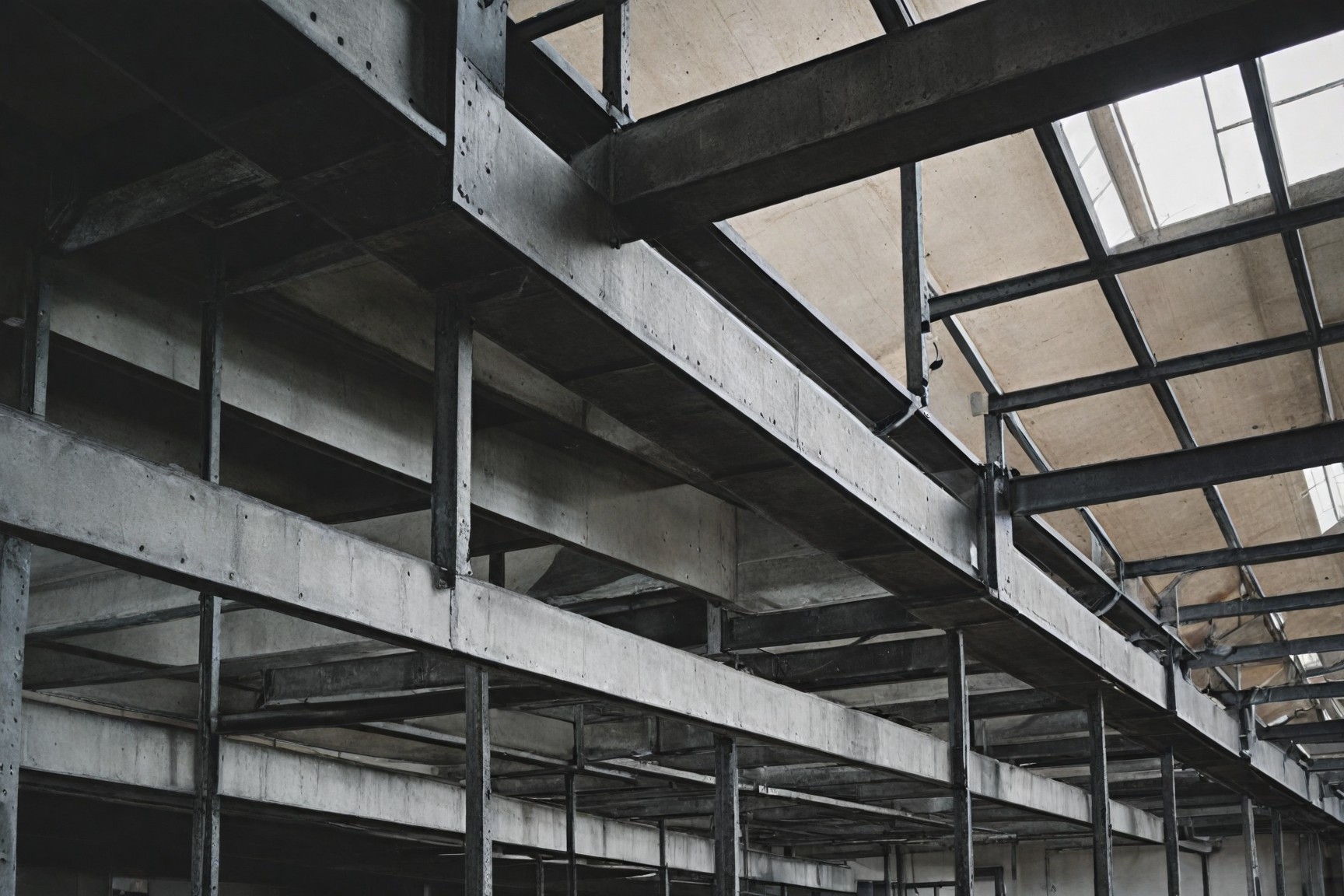
Steel, glass, and concrete are key materials, reflecting Bauhaus's modern, functional ethos. Exposed structural elements, glass partitions, and concrete features add openness and transparency to spaces. These materials are often left in their raw state, celebrating their inherent qualities and textures. The use of industrial materials extends to furniture design, with pieces often featuring tubular steel frames, glass tabletops, or molded plywood, showcasing the Bauhaus commitment to merging art with industrial production.
Minimalist Aesthetic
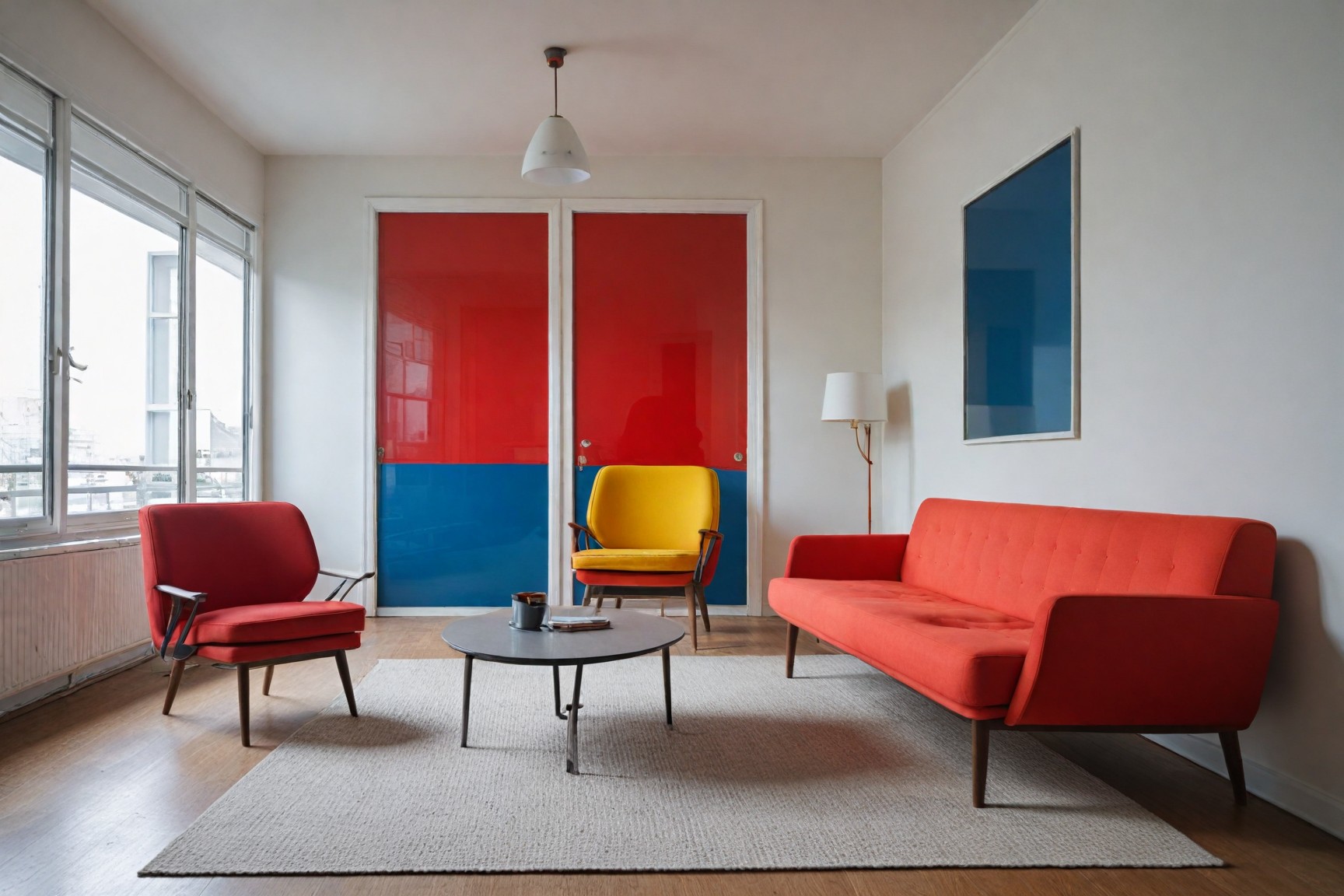
Bauhaus interiors are minimalist, focusing on simplicity and functionality without unnecessary ornamentation. This aesthetic is achieved through streamlined furniture, clutter-free surfaces, and a limited color palette. The minimalist approach of Bauhaus design emphasizes the beauty of simple, well-crafted forms and the interplay of light and space. This aesthetic creates a sense of openness and calm in interiors, allowing the essential elements of the design to take center stage.
Substyles of Bauhaus Interior Design
Bauhaus interior design has various substyles, each offering unique interpretations of the movement's principles. These substyles demonstrate the versatility and adaptability of Bauhaus design, catering to different aesthetic preferences and functional needs. The evolution of these substyles reflects the enduring influence of Bauhaus principles across different eras and design sensibilities. Each substyle maintains the core Bauhaus values of functionality and simplicity while introducing distinct elements that set it apart from the others.
Classic Bauhaus
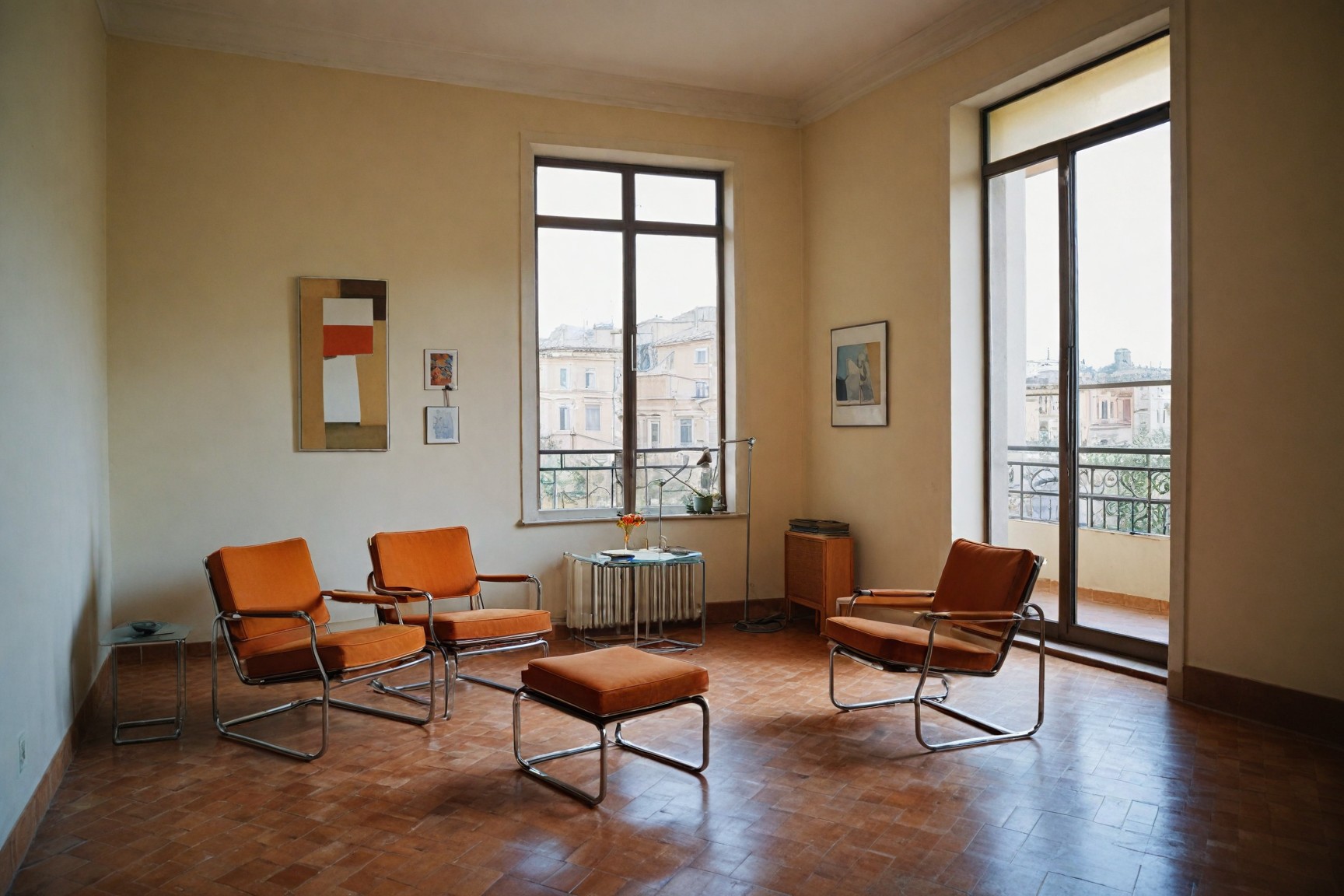
Classic Bauhaus closely adheres to the original principles of the movement, emphasizing functionality, simplicity, and the use of primary colors and geometric forms. Iconic pieces like the Wassily Chair by Marcel Breuer and the Nesting Tables by Josef Albers exemplify this substyle's dedication to the movement's core aesthetics. Classic Bauhaus interiors often feature a stark, almost austere quality, with a focus on the interplay between form and function. The use of tubular steel, glass, and leather in furniture design is characteristic of this substyle, reflecting the Bauhaus school's interest in industrial materials and production methods.
Mid-century Modern Bauhaus
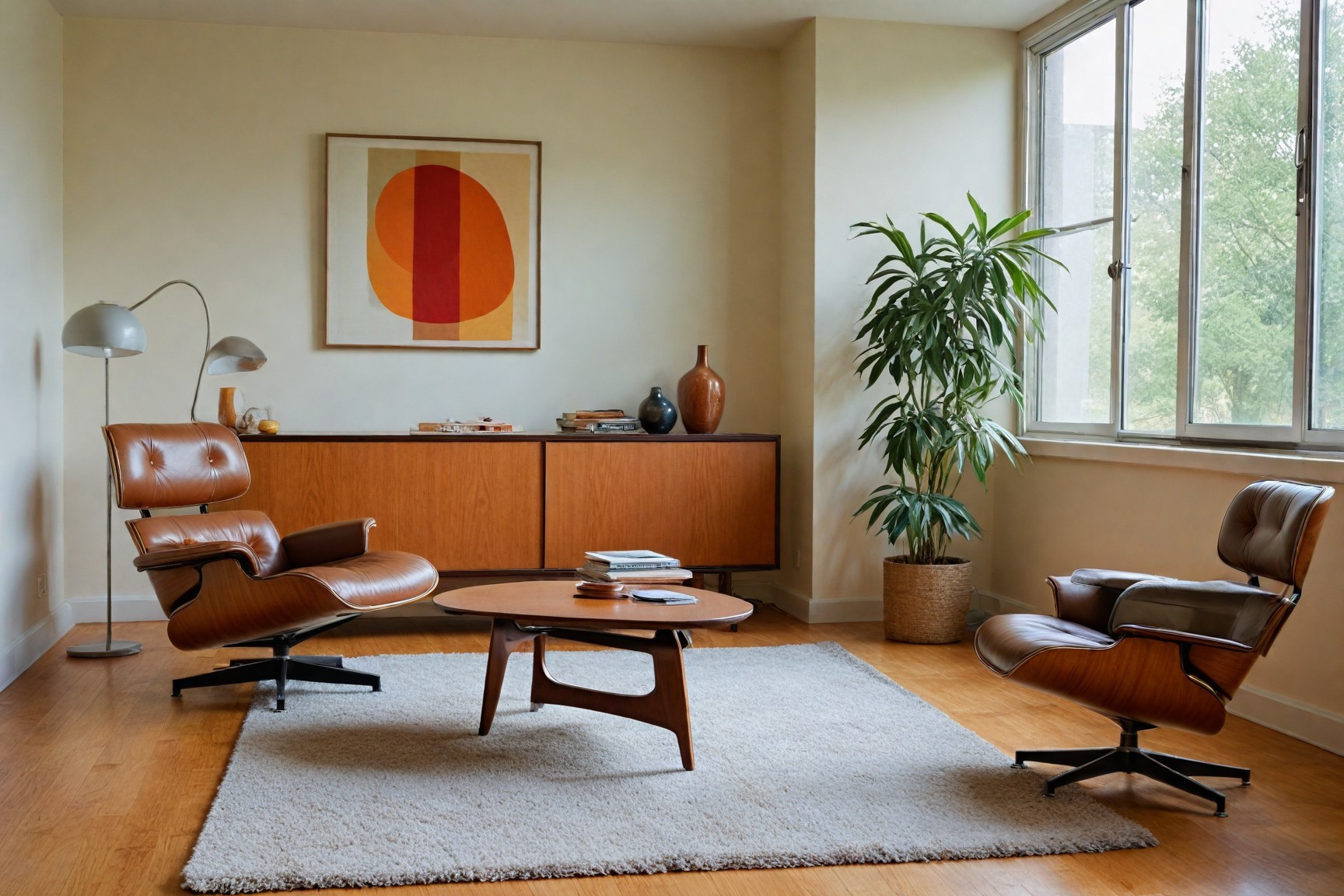
This substyle emerged in the post-World War II era, integrating Bauhaus elements into a more organic, expressive aesthetic. It features curved lines, organic shapes, and natural materials like wood and leather. Iconic pieces include the Eames Lounge Chair and the Noguchi Coffee Table, which reflect a softer, playful interpretation of Bauhaus principles. Mid-century Modern Bauhaus blends the functionalism of Bauhaus with a more relaxed, livable approach to design. This substyle often incorporates bold colors and patterns, moving beyond the strict primary color palette of Classic Bauhaus while maintaining a focus on clean lines and geometric forms.
Contemporary Bauhaus
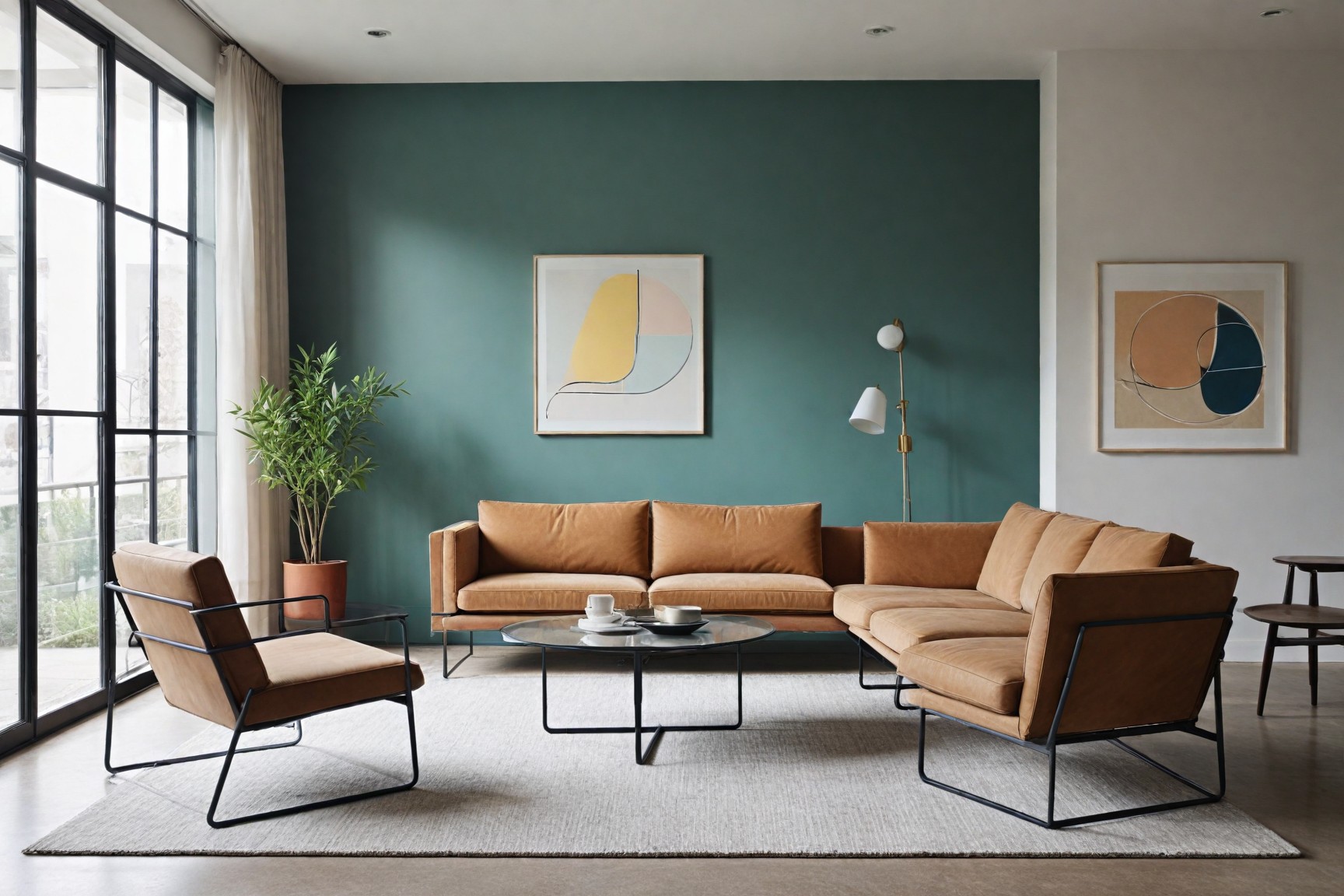
Contemporary Bauhaus updates the movement's principles for the 21st century, featuring a minimalist, streamlined aesthetic with clean lines, neutral colors, and modern materials like stainless steel and glass. Examples include the Outline Sofa by Muuto and the Hee Dining Chair by Hay, showcasing a modern take on Bauhaus design. This substyle often incorporates advanced manufacturing techniques and innovative materials, reflecting the Bauhaus commitment to embracing new technologies. Contemporary Bauhaus interiors tend to be more understated than their classic counterparts, favoring a monochromatic or neutral color palette with occasional pops of bold color.
Industrial Bauhaus
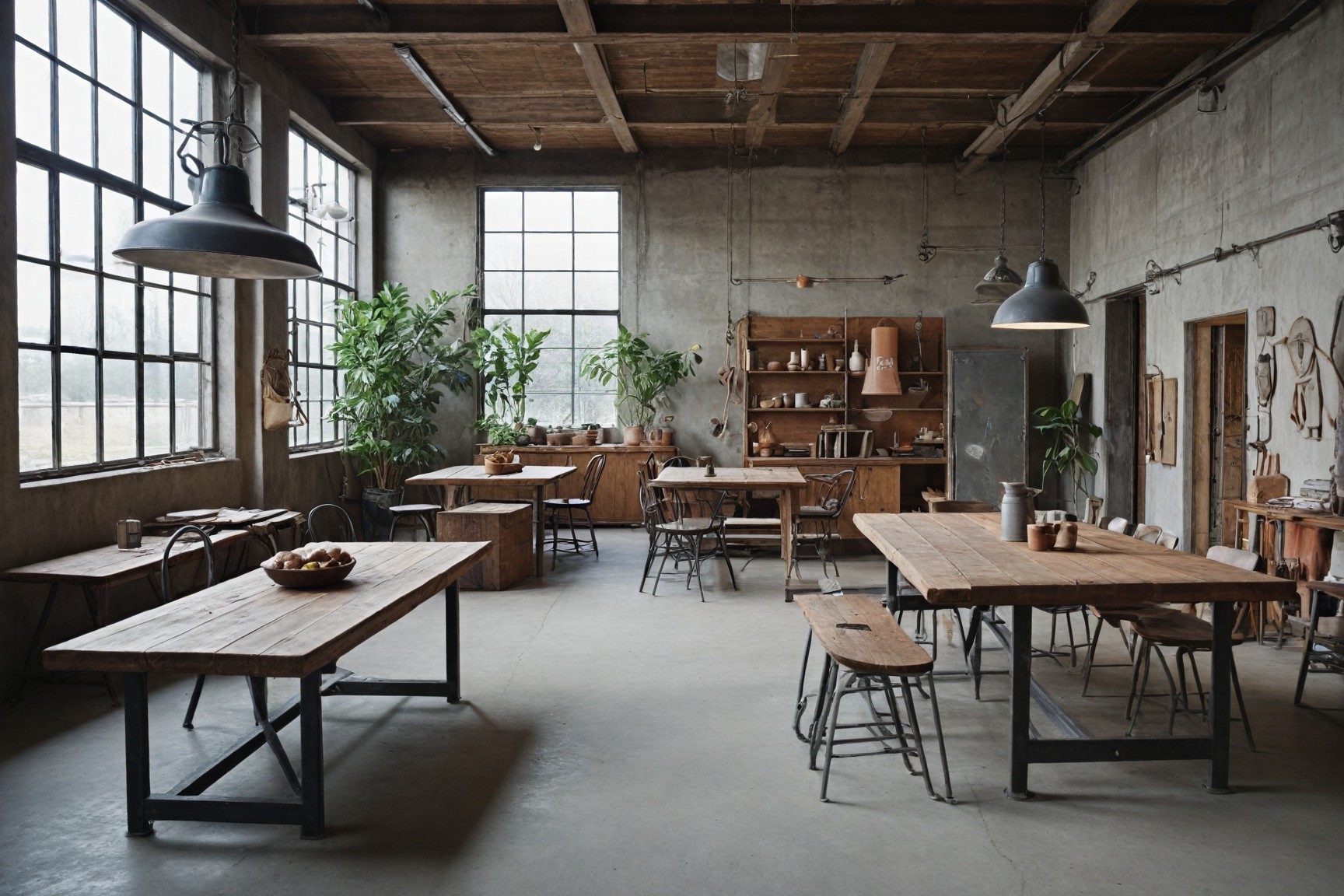
Industrial Bauhaus combines the movement's focus on functionality and simplicity with a raw, unfinished aesthetic. It incorporates exposed structural elements, vintage or repurposed industrial pieces, and materials like concrete and metal. Achieving this look can involve using a reclaimed wood dining table, metal pendant lights, or a vintage factory cart as a coffee table. Industrial Bauhaus embraces the concept of "form follows function" in its most literal sense, often leaving mechanical and structural elements visible as part of the design. This substyle frequently features high ceilings, open floor plans, and large windows, emphasizing the Bauhaus principle of integrating interior spaces with their surroundings.
Room by Room Bauhaus Interior Design Ideas
Applying Bauhaus interior design principles to specific rooms can create cohesive, functional, and aesthetically pleasing spaces throughout your home. Here are some ideas and inspirations for each room type:
Bauhaus Living Room
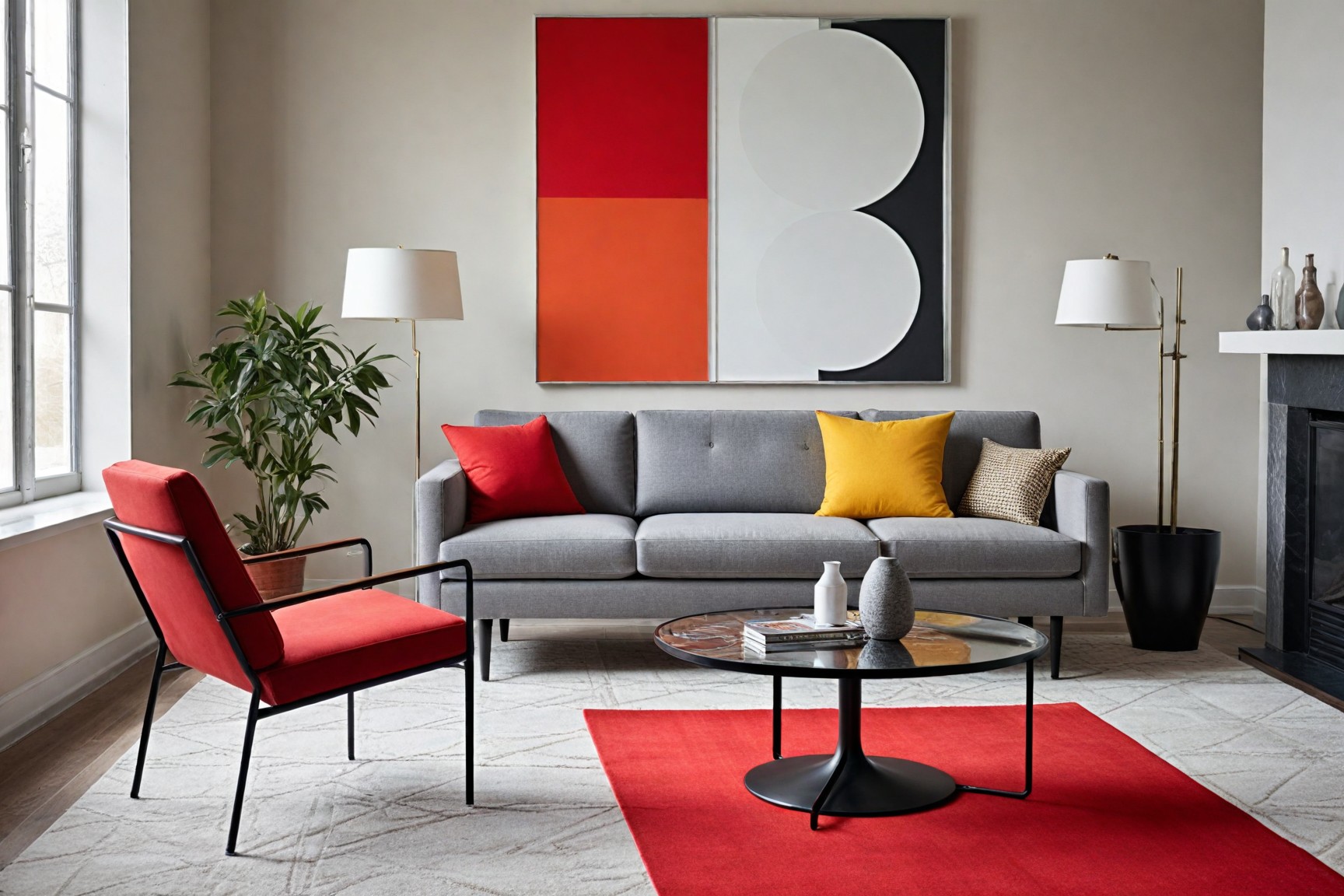
Create a Bauhaus-inspired living room by focusing on minimalist color schemes, geometric patterns, and functional furniture. Arrange furniture to foster openness and flow, using pieces like a low-profile sofa and a glass coffee table. Incorporate primary colors and graphic patterns with items like a red accent chair or a black-and-white rug. Accessorize with geometric sculptures and streamlined floor lamps to complete the look.
Bauhaus Kitchen and Dining Room
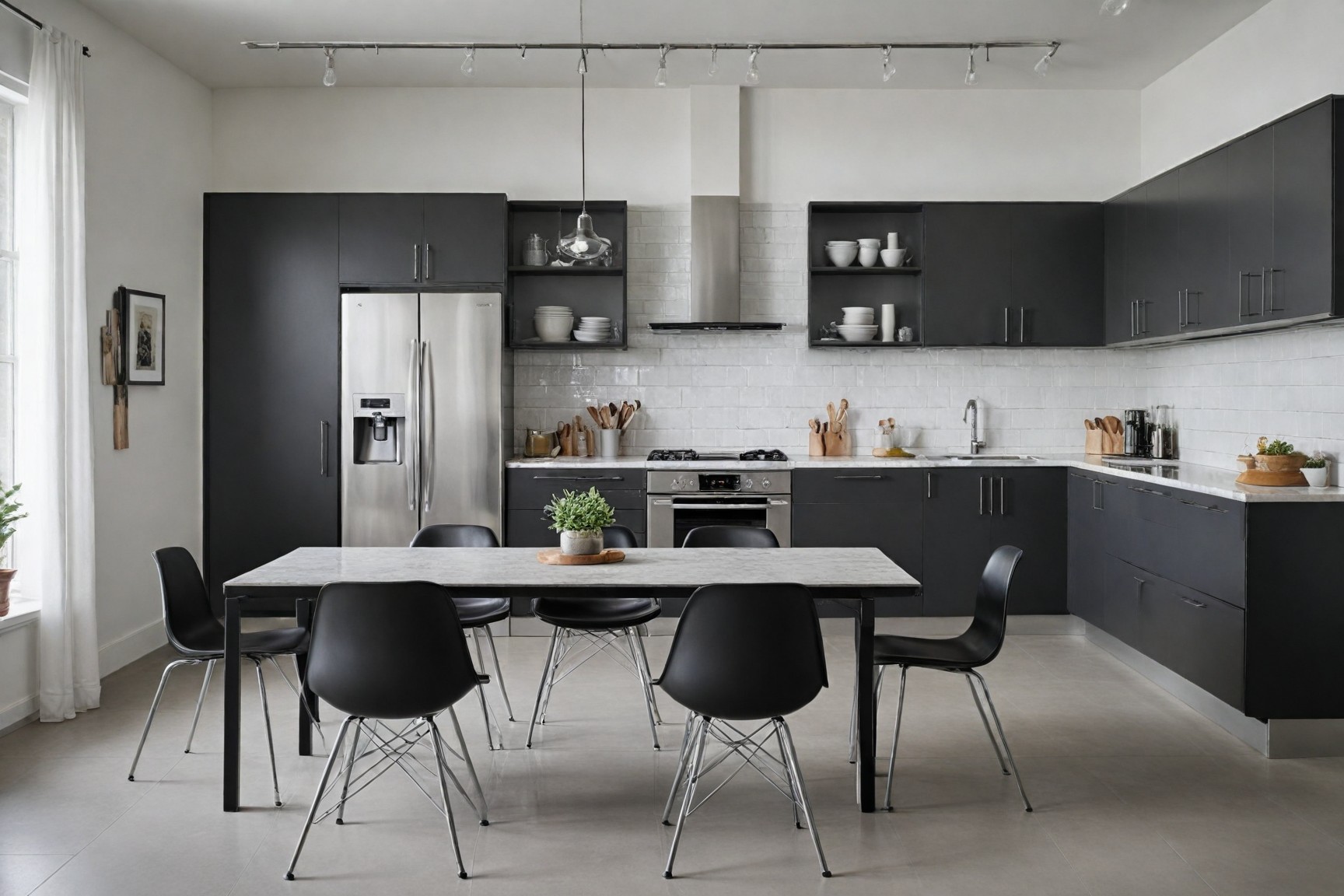
Design a Bauhaus kitchen and dining room with sleek cabinetry, industrial materials, and functional dining furniture. Use a monochromatic color scheme, handleless cabinets, and stainless steel appliances for the kitchen. In the dining area, opt for a glass-topped table with steel legs and minimalist dining chairs. Incorporate simple, geometric forms to maintain the Bauhaus aesthetic.
Bauhaus Bedroom
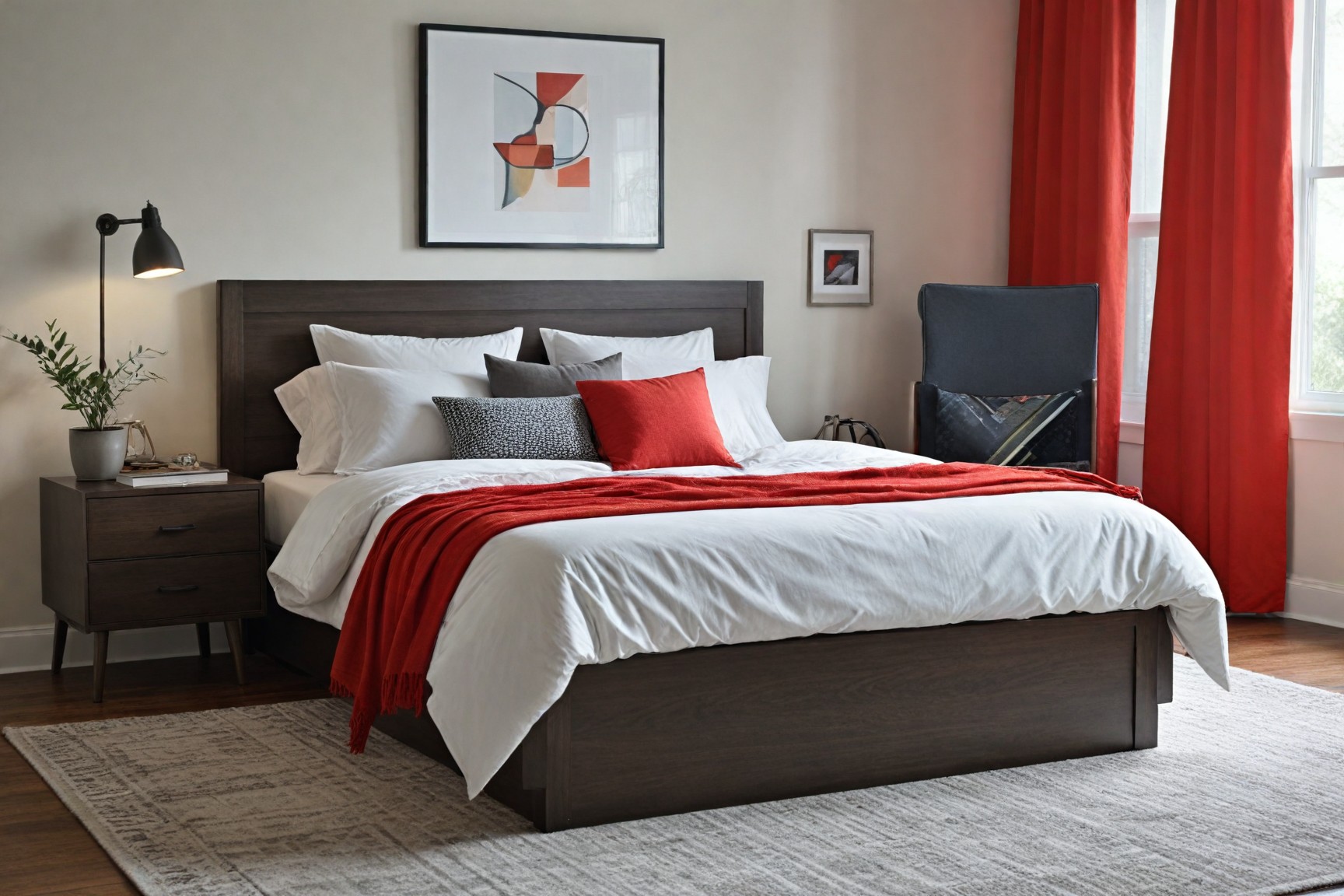
For a Bauhaus-inspired bedroom, focus on minimalist color palettes, simple bedding, and functional storage solutions. Create a tranquil space with a platform bed featuring clean lines, a monochromatic color scheme, and built-in storage to reduce clutter. Add visual interest with geometric patterns and primary colors through graphic print duvet covers or red accent pillows.
Bauhaus Bathroom
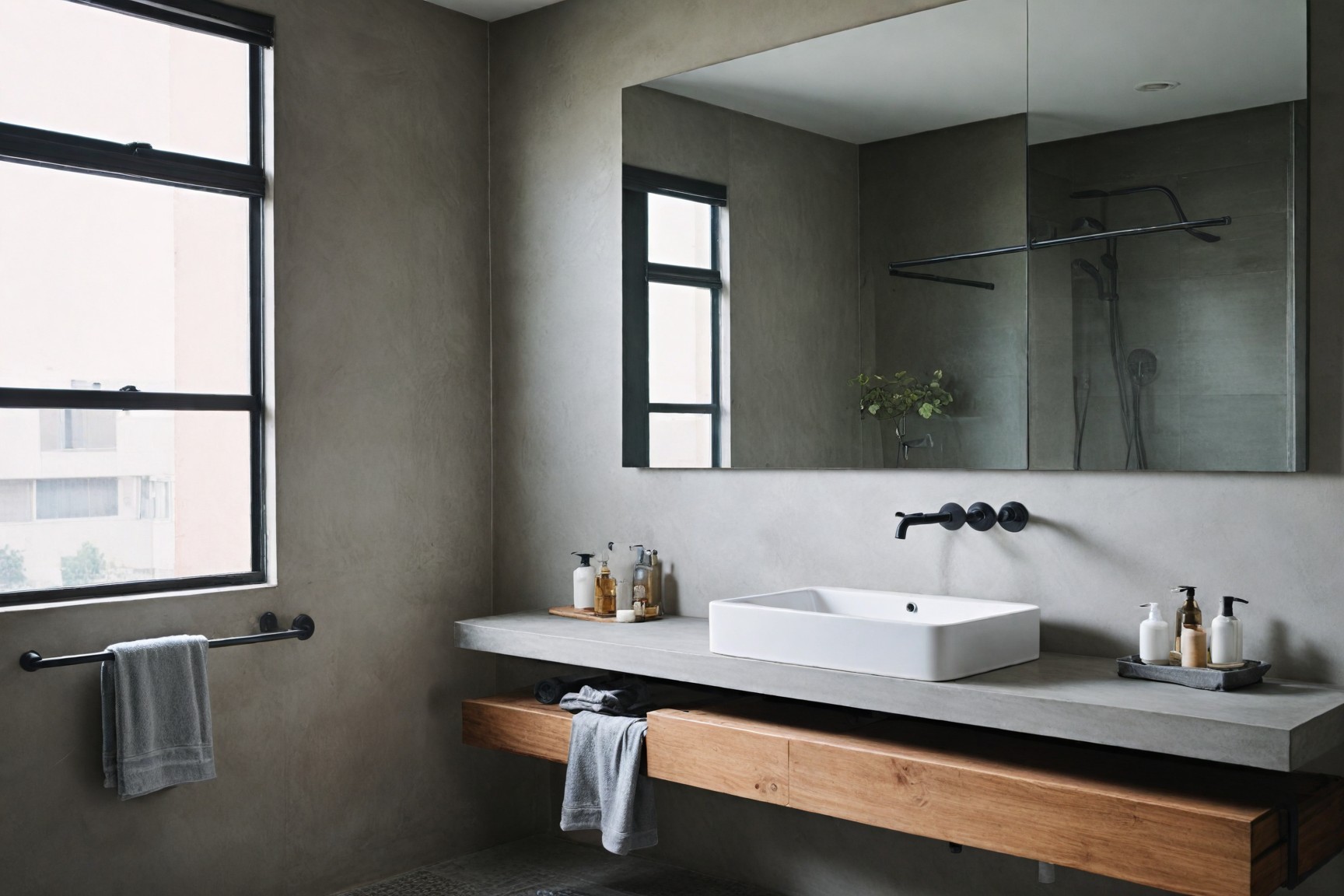
Design a Bauhaus bathroom with sleek fixtures, industrial materials, and a minimalist aesthetic. Use a monochromatic color scheme, a floating vanity, and a glass shower partition. Incorporate industrial materials like a concrete sink and steel towel bars, along with simple geometric forms to enhance the modern Bauhaus look.
Bauhaus Home Office
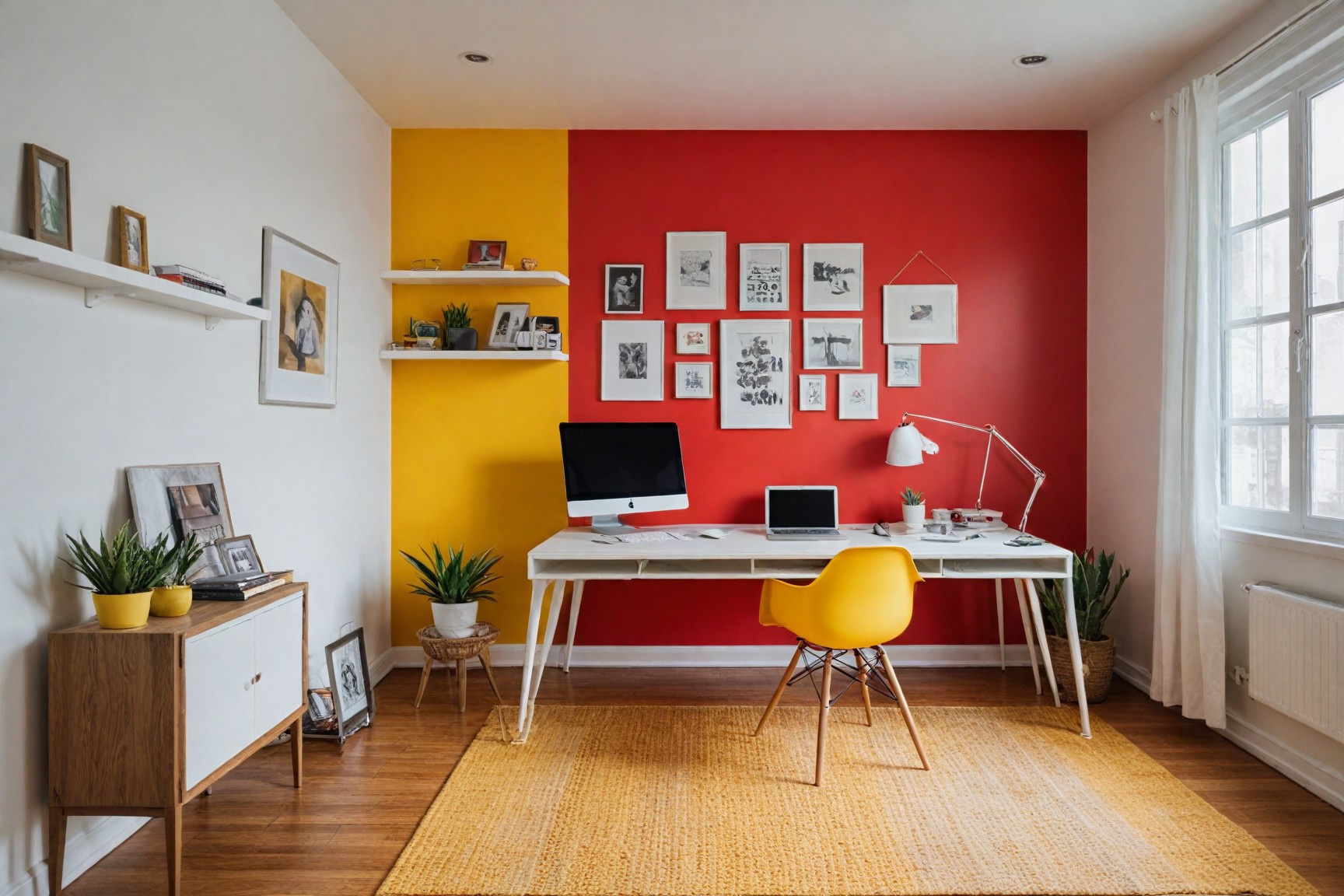
Create a functional and stylish Bauhaus home office with ergonomic furniture, minimalist decor, and a clutter-free workspace. Use a streamlined desk, a clean-lined ergonomic chair, and built-in storage to keep the area organized. Add primary colors and graphic patterns with a geometric print rug or red accent shelves to maintain visual interest while adhering to Bauhaus principles.
Why Choose Bauhaus Interior Design?
Choosing Bauhaus interior design offers a blend of style, functionality, and efficiency, making it a compelling choice for modern homes. Here’s why:
Timeless and Iconic Style
Bauhaus design, with its clean lines, simple forms, and geometric patterns, remains influential and relevant over a century later. Iconic pieces like the Wassily Chair and the use of primary colors embody this enduring style.
Emphasis on Functionality and Practicality
Bauhaus prioritizes functionality, creating spaces that are both efficient and aesthetically pleasing. Functional furniture and storage solutions ensure uncluttered, streamlined living areas, adaptable to modern needs.
Versatility and Adaptability to Modern Living
Bauhaus design principles are versatile and can be applied to various living spaces, from minimalist living rooms to functional home offices. It can also blend with other styles, incorporating natural materials or bold colors.
Minimalist Aesthetic for a Clutter-Free Space
Bauhaus emphasizes a minimalist aesthetic, creating visually harmonious and clutter-free spaces. Simple, streamlined furniture and monochromatic color schemes contribute to a clean, organized environment, enhancing visual clarity and tranquility.
Embrace Bauhaus Design with Deft
Bauhaus interior design, with its century-old legacy, continues to captivate and inspire homeowners and designers alike. From its origins in 1919 Germany to its enduring influence on contemporary design, Bauhaus principles of functionality, simplicity, and geometric forms have stood the test of time. This article has explored the key elements that define Bauhaus interiors: clean lines, primary colors, industrial materials, and a minimalist aesthetic.
The timeless appeal of Bauhaus lies in its ability to create clutter-free, efficient living spaces that are both practical and aesthetically pleasing. By embracing Bauhaus design, you can infuse your home with iconic style while ensuring it meets the demands of modern living.
Start Your Bauhaus Journey with Deft Imagine
To bring your Bauhaus-inspired vision to life, consider exploring Deft and its innovative AI-powered tool, Deft Imagine. This cutting-edge platform allows you to visualize and incorporate Bauhaus design elements effortlessly, making it easier than ever to create your perfect interior. Whether you're looking to refresh a single room or redesign your entire home, Deft Imagine offers the tools and inspiration to transform your space into a Bauhaus masterpiece.
Start your Bauhaus journey today with Deft Imagine and discover how this revolutionary design movement can elevate your living space to new heights of functionality and style.
